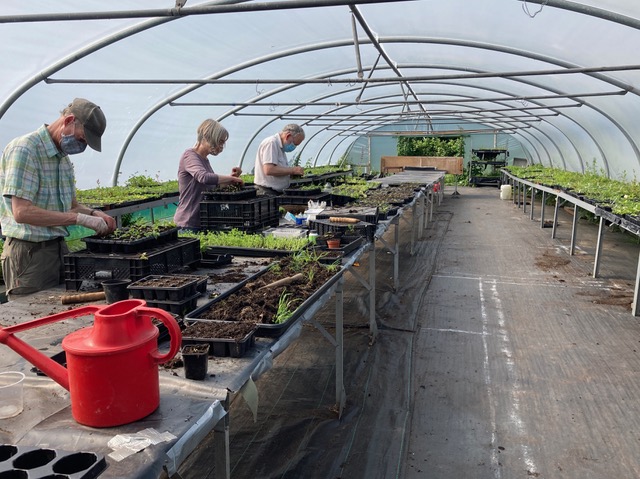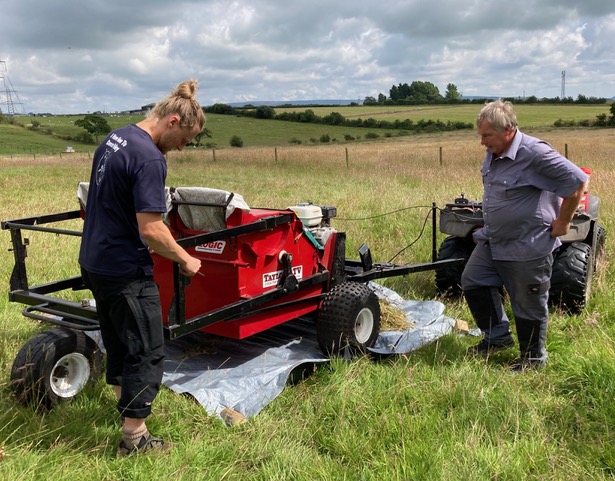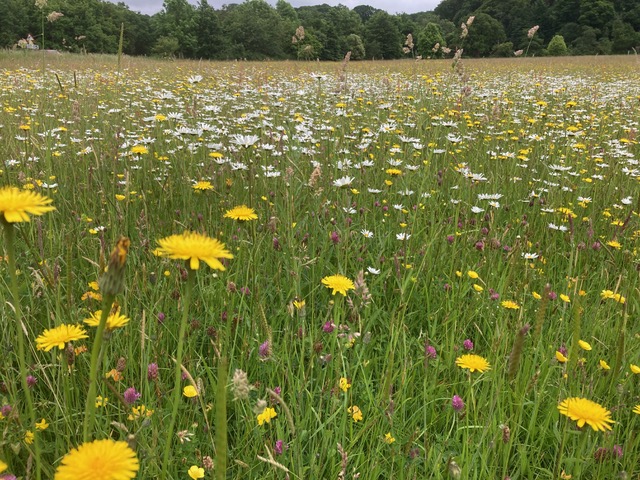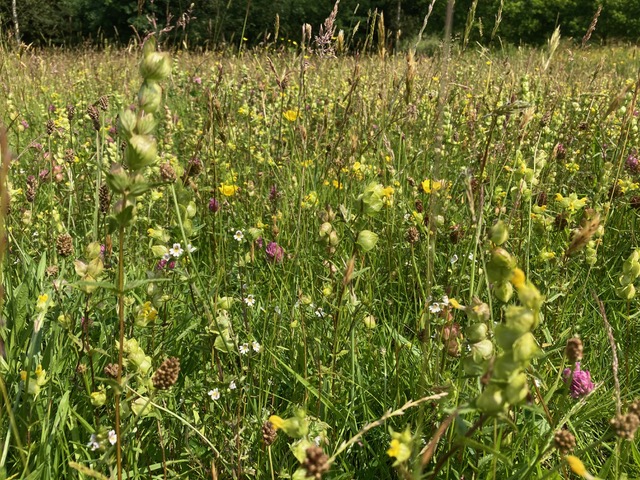Our Work
Our Work
More than 97% of the species-rich hay meadows which were once common throughout England have been lost since the 1930’s. By restoring Hermitage Field to a flower-rich meadow we are helping to reverse these declines, creating habitat for flowers, pollinators and birds, enriching the landscape and providing a wildlife-rich space for people to enjoy.
Our work to bring about this transformation started in the spring of 2020, and has involved a number of stages and tasks.
Preparing the Field
Hermitage Field had been neglected for many years, and was dominated by tall grasses and weeds. Therefore, before undertaking any meadow restoration we needed to control the growth of these. The field was grazed with sheep in spring, cut for hay at the end of the summer, and grazed again in autumn. We also strimmed, scythed and dug-out patches of docks and thistles to reduce their vigour and stop them shedding seeds.
We then arranged for the site to be chain-harrowed, to create open spaces where wildflower seeds could establish.
A baseline survey of the site, including testing of the soils, was also undertaken by ecologists working for the Forest of Bowland AONB during the summer of 2021.








Introducing more wildflowers
To start increasing the numbers of different plants, in summer 2020 we obtained sustainably harvested wildflower seed from a number of donor sites. Some was donated from other local meadows, and some was bought using grants from the Halton Lune Trust and the Defra Green recovery Challenge Fund. We also obtained permission to hand-harvest some seed from local sites.
During the winter of 2020/21 this seed was sown onto half of the field, which had been prepared by chain harrowing to create areas of bare soil. A particularly important plant which we sowed was yellow rattle, which acts as a parasite on some grasses, and so reduces their vigour.
We also used some of the locally hand-collected seed to grow plug plants in poly-tunnels owned by Lancaster City Council. Despite the restrictions of the Covid pandemic, a team of community volunteers, co-ordinated by trustees Erica and Claire, were able to grow more than 9.000 healthy plug plants ready for planting during spring and summer 2021. These were planted at Hermitage field by groups of volunteers throughout the summer of 2021, and the project was so successful that we were also able to give some of our plants to other local projects.

Continuing Management
To ensure that the plants we have introduced thrive, we need to continue managing the field with a traditional pattern of hay-meadow management. This means grazing in spring, ‘shutting-up’ the field from late spring through to the middle of August, which allows plants to flower and set seed, then cutting for hay and making bales which are removed. This is followed by a period of ‘aftermath’ grazing in autumn. Management of weeds such as docks and thistles will also be needed throughout the year.
With help from the Green Recovery fund and local landowners such as Peter and Lynn Blackwell, Cath and Bill Grayson, Arabella Lennox-boyd at Gresgarth Hall, private meadows in Bentham and Lancaster and the community meadow at Life 4 Life Memorial Forest Site at Crook of Lune, we obtained more wildflower seed from donor sites in summer 2021, which was sown on the second half of the field in the autumn.
Support and information
To achieve all this we rely on the goodwill and support of volunteers, funders, local farmers and landowners, and we are grateful to all who have contributed. Visit our news pages to see all the work the community have been involved with.
If you would like to get involved or find out more about how to do so please contact us.
If you would like to know more about meadows and meadow management the following sites have lots of information
Magnificent meadows: http://www.magnificentmeadows.org.uk
Plantlife: https://www.plantlife.org.uk/
Floodplain meadows: https://www.floodplainmeadows.org.uk
Download this information leaflet to find out more about the key role Yellow Rattle has in creating wildflower meadows.




